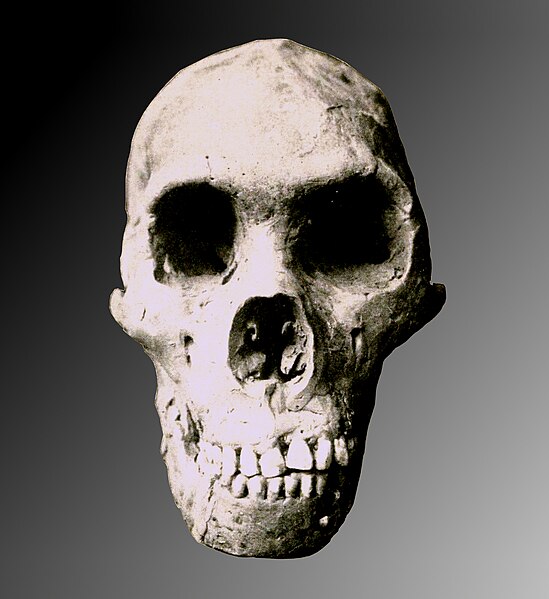Le Moustier is an archeological site consisting of two rock shelters in Peyzac-le-Moustier, a village in the Dordogne, France. It is known for a complete skeleton of the species Homo neanderthalensis that was discovered in 1908. The Mousterian tool culture is named after Le Moustier, which was first excavated from 1863 by the Englishman Henry Christy and the Frenchman Édouard Lartet. In 1979, Le Moustier was inscribed on the UNESCO World Heritage List along with other nearby archeological sites as part of the Prehistoric Sites and Decorated Caves of the Vézère Valley.
Le Moustier 1 in 1909, before WWII bombing.
Upper shelter
Lower shelter
Flint handaxe, excavated 1863, British Museum
The Mousterian is an archaeological industry of stone tools, associated primarily with the Neanderthals in Europe, and to the earliest anatomically modern humans in North Africa and West Asia. The Mousterian largely defines the latter part of the Middle Paleolithic, the middle of the West Eurasian Old Stone Age. It lasted roughly from 160,000 to 40,000 BP. If its predecessor, known as Levallois or Levallois-Mousterian, is included, the range is extended to as early as c. 300,000–200,000 BP. The main following period is the Aurignacian of Homo sapiens.
Distribution of Homo neanderthalensis, and main sites. Mousterian industries have been found outside this range (e.g., Jordan, Saudi Arabia)
Le Moustier 1 Neanderthal skull, today in the Neues Museum, Berlin.
Mousterian point
Production of points & spearheads from a flint stone core, Levallois technique, Mousterian culture, Tabun Cave, Israel, 250,000–50,000 BP. Israel Museum








